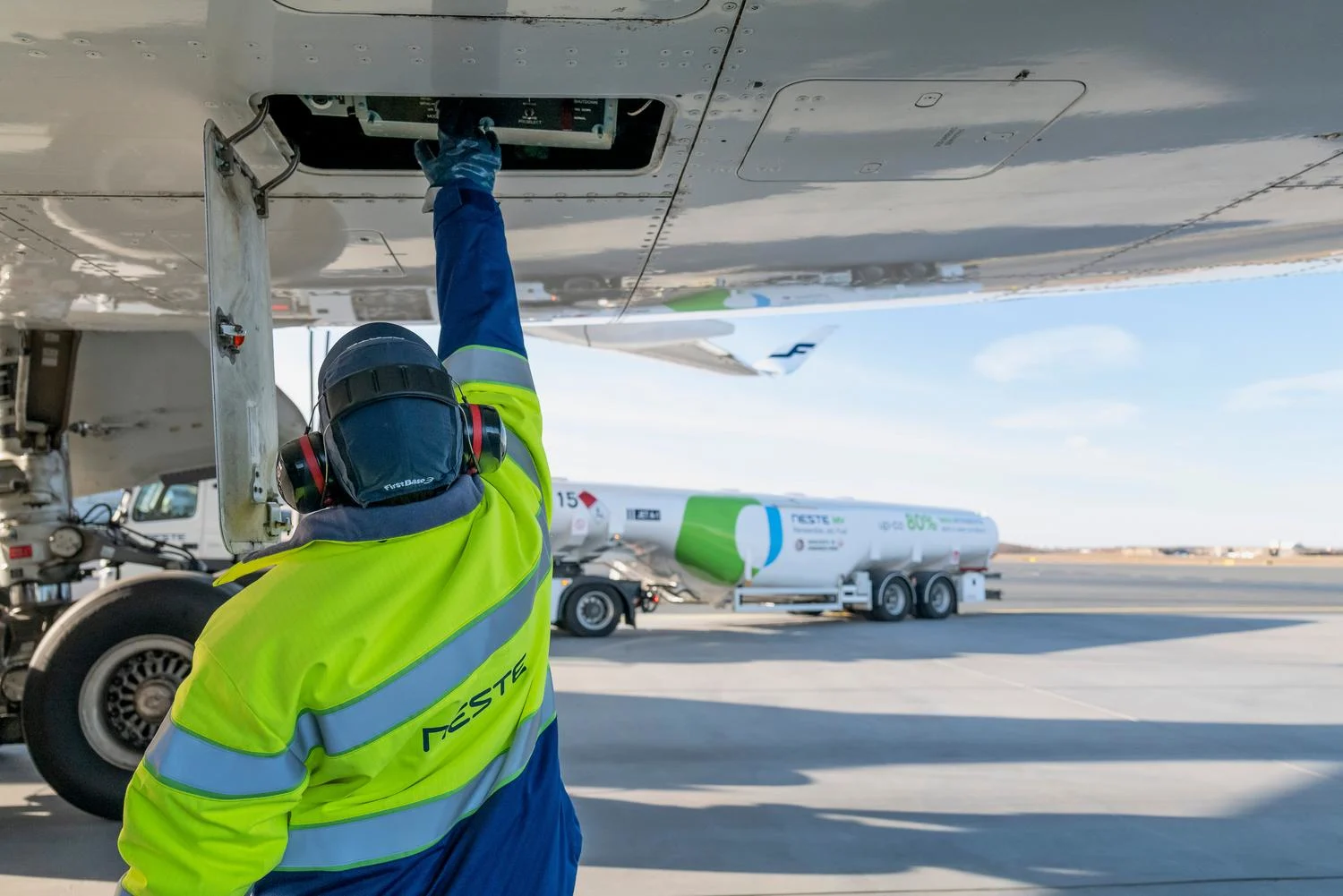
Aviation
5 minute read
DHL and Neste join forces to decarbonize logistics
Renewable fuels play a major role in DHL’s decarbonization roadmap, aiming for carbon neutrality by 2050.
In this article:
DHL and Neste are partnering to decarbonize logistics, with renewable fuels playing a crucial role in DHL's plan to achieve carbon neutrality by 2050
DHL considers SAF a key solution for reducing its aviation carbon footprint, due to its compatibility with existing aircraft and infrastructure
DHL emphasizes that there is a growing demand for more sustainable solutions from customers
The logistics industry could be described as the backbone of our global economy and supply chains – the wheels that keep the economy running. “Life today wouldn’t work without international logistics and shipping. Logistics is very important for international trade, connecting people and improving lives,” says Markus Otto, SVP Aviation, DHL Express Europe. The DHL Group is one of the largest logistics companies in the world. DHL Express is operating around 2,400 daily flights with 300 dedicated freighter aircrafts, and delivering packages with more than 34,000 courier vehicles.
However, the logistics sector also remains very dependent on fossil fuels and is therefore in need of a major shift towards more sustainable means of transporting goods – by switching, for example, to renewable fuels. In this sense, DHL can be considered a frontrunner, having started decarbonizing its services over a decade ago. When it comes to air freight, already 3.6 percent of jet fuel used in DHL’s aviation operations is neat sustainable aviation fuel (SAF).
“The first and most obvious way to improve our carbon footprint is to be as fuel-efficient as possible, so we are optimizing, for example, the aircraft types we use on certain routes. The second way is to decide what you burn. You can burn kerosene-based fossil fuel or fuel blends including SAF,” says Andreas Mündel, SVP Strategy & Operations Programs, DHL Group.
Reducing aviation’s footprint
Considering DHL Group’s targets and ambitions for reducing GHG emissions from their operations, Mündel says that roughly two-thirds of the company’s carbon footprint comes from aviation. Here SAF as a drop-in fuel that can be used in its existing fleet is seen as the main solution for emission reductions. “The beauty of SAF is that we can drop it into the fuel tank and use it as is with existing aircraft, fuel tankers, and our current fuel infrastructure,” Otto says.
In the baseline year 2021, the DHL Group emitted 40 million metric tons of CO2, including suppliers and subcontractors, and has set a target to reduce it to 29 million metric tons by the year 2030. The company aims to be green house gas (GHG) net zero by 2050.
Mündel adds that lower-GHG-emission logistics solutions have become increasingly important for customers, as logistics often account for a major part of their customers’ scope 3 emissions.
"The beauty of SAF is that we can drop it into the fuel tank and use it as is with existing aircraft, fuel tankers, and our current fuel infrastructure."
A strategic partnership for scalable sustainability
Neste originally delivered the first batches of SAF to DHL in 2020, as one of the company’s first strategic suppliers. Mündel says that partnering with a frontrunner such as Neste was important for demonstrating the availability of SAF on a global level.
“I believe DHL can act as a change agent for the logistics and transport sectors with its ‘let’s do it’ attitude, showing that we can accelerate the decarbonization of the industry,” Carl Nyberg, Senior Vice President, Commercial, Renewable Products at Neste says and emphasizes how SAF and renewable diesel – as drop-in solutions – are available at scale already today for making immediate emissions reductions.
“SAF will play an important role in decarbonizing aviation, and its significance will grow over the coming years as we see further regulation supporting its scale-up. Obviously, the industry needs to further ramp up production, and that requires strong commitment from companies and support from governments to make the required major investments. Regulation, for example, can play an important role in closing the cost gap between renewable and fossil fuels,” Nyberg points out.
Book and claim: Tracking emissions reduction in a global network
Discussing the transformation of the entire industry, Mündel highlights the crucial role of a book and claim system, i.e. a tool that helps companies more easily reduce their carbon emissions. It provides a solution when direct access to a physical lower-GHG-emission product is limited, separating the product from its sustainability benefits.
“Book and claim is important when bringing SAF into the network, because you can only bring it to a limited number of airports where it makes sense logistically. Although we cannot ensure that a specific aircraft will fly on SAF, we can replace a certain amount of kerosene with SAF somewhere in our network and reduce emissions. Book and claim is an easy service for our customers – much like SAF is a drop-in solution for us,” Mündel explains.

Scaling SAF to match market demand and mandates
Looking forward, Otto stresses the need for a larger scale of availability for SAF in order for the unit cost to decrease.
“We at DHL are a good example of using SAF voluntarily as frontrunners together with Neste. Introducing mandates is another way of activating companies and stimulating the market. We are already exceeding the levels of the ReFuelEU mandate and support the mandating of SAF if it helps to stimulate further production and use,” Otto notes.
But what advice would DHL give to other logistics companies looking to reduce their emissions, and why should they start their decarbonization journey?
“Although there is an element of obligation to reduce the significant footprint of logistics, we have realized that customers are really looking for opportunities in this area. It’s critical that you don’t underestimate customer demand. We have learnt that there is demand for sustainable solutions and willingness to pay,” Mündel concludes.

